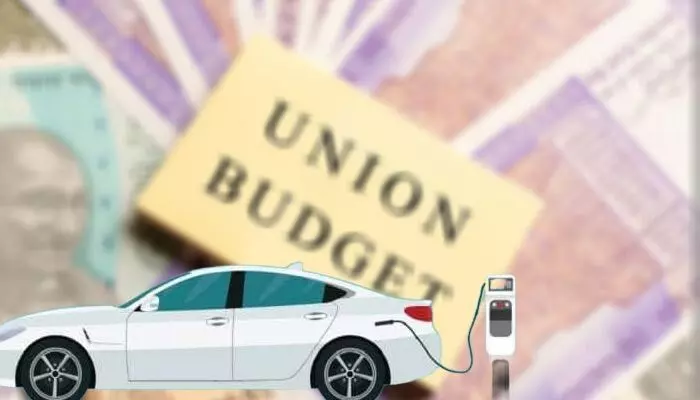Parliament budget session: What EV ecosystem wants from the government?
While these are initiatives that helped gained momentum, as the ecosystem grows to the next level, the expected support also reaches a higher level.
By Newsmeter Network
Hyderabad: Feb 1 is an interesting day. Celebrations of Christmas, New year, and the Pongal festive draws to a close, and the budget session of parliament starts.
This is 5th such budget of the current Finance Minister and also the last one before the general elections. While the government still sticks to its 5 trillion USD economy, which would be built on infrastructure and developmental activities. In this context, the budget attracts immense significance from a political and economic perspective.
What can we expect for EV Ecosystem?
It had been a very encouraging era for the EV industry for the past 5 years. Here are the sequences that helped EV Mobility gain momentum in India.
1. MOVE – Global Mobility Summit in 2018 that was anchored by NITI Aayogl.
2. FAME 2.0 launch in 2019 boosted the demand incentive in the country
To the latest
3. Production Linked Incentives and the release of 18,000 crores to the Advanced Chemistry cell.
While these are initiatives that helped gained momentum, as the ecosystem grows to the next level, the expected support also reaches a higher level.
What does EV Ecosystem want?
What the Indian EV Ecosystem wants now is the “Integrated and Inclusive Approach for Green Mobility”. The industry realizes that incentives either demand or supply is not sustainable in the long run and it’s always the integrated and inclusive approach that takes it forward.
What does that mean and what all it encompasses:
The following points are already tick-marked in the EV Ecosystem.
1. Penetration of 2-wheelers – picking up
2. End consumers already enjoying the lower running costs
3. Last-mile deliveries for E-commerce have already started and are tending to raise and scale
4. Shared mobility through electric buses and aggregation of demand by CESL is already showing signs of success
While the market overall gains traction and acceptability; affordability at least among passenger Electric vehicles is still unachieved.
And such huge disparity can never be continuously addressed through incentives but through measures that would boost the volumes of components. And this is possible through cross-linkages with various automotive touchpoints.
1. The vehicle scrapping policy is all set and ready to be established and deployed among various states – Budget to mention/ talk about enhanced and lucrative incentives that allow the vehicle owners to opt for an electric vehicle in the place of an ICE vehicle through an exchange.
2. Along with this, the budget also must encourage the circular economy and enable the ecosystem to set up the recycling of the scrape and help find their place once again in the manufacturing of vehicles.
3. At a juncture like this, the budget might also encourage the deeper value chain of the EV Ecosystem – such as the afterlife of batteries, their safe disposal, and urban mining (extracting minerals from batteries of laptops, phones, inverters, etc & put them to reuse) Specific business to soon come into play which will help industry curtain down its dependency on fresh new raw materials but consumes these recycled inputs.
4. While the battery and swapping policy is already in place, the budget must focus on bringing standardization at least in terms of the structure, layout, and other peripherals and connects of these battery packs to ensure, mass production with fewer variations.
5. Focus on Research, Development, and Training – The biggest threat to the growing industry is the nonavailability of a relevant talent pool and research and labs that are working on advanced battery chemistries and alternate fuels.
While the bigger players can afford to set up their labs and training institutes to hone their talent, start-ups and MSMEs may not find it affordable to run and build their own, and hence the budget must encourage the Learning & Training, and testing Labs.
6. Decarbonized Economy as a whole: While the budgets and policies so far addressed the battery-to-wheel efficiency and supply chain; it's important now to address the value chain that goes into making the electric vehicle.
7. Not just into electric vehicle manufacturing, but the adoption of hydrogen and specifically green hydrogens needs to be heavily pushed and encouraged into the manufacturing industry. This will further help achieve the cause of a net zero-emission country by 2070.
a. Ex: There can be further pushed and encouragement to ecosystem players who would use green hydrogen / renewable or other nonfossil fuels in the making of vehicles.
b. The carbon credits can further be brought into context and be used as manufacturing incentives for players who are producing fewer carbon emissions.
While the ask might continue further; the budget must address the non-EV and nonautomotive segments, especially from the manufacturing perspective to encourage and push sustainable ways of manufacturing and living. This will further enhance the demand and supply of BOM that gets into manufacturing of Electric vehicles and by the sheer increase of such volumes, the overall cost of the electric vehicles would come down and in some cases, it might even fall below the cost of its counterpart ICE Vehicle.
About Author:
Rajeev YSR
Chief Mentor - EV Masterclass | MIT Sloan | IIT Madras I 40 Under 40 | Govt Advisor - Policy & Investment Promotion | Global Emerging Leader & National Youth Icon'22 awardee| Angel Investor | Startup Mentor | Faculty @ISB D-Labs | EV Expert | Ex COO - Avaan, Gati, Bosch, M&M, TVS